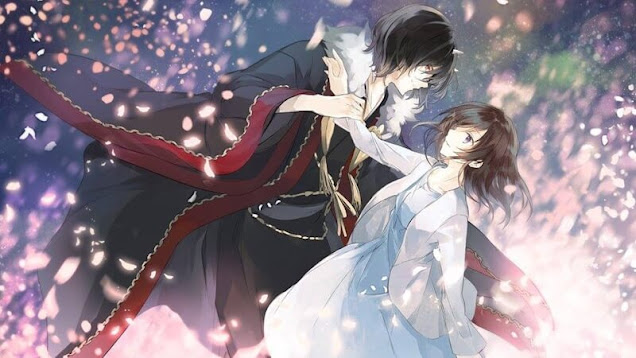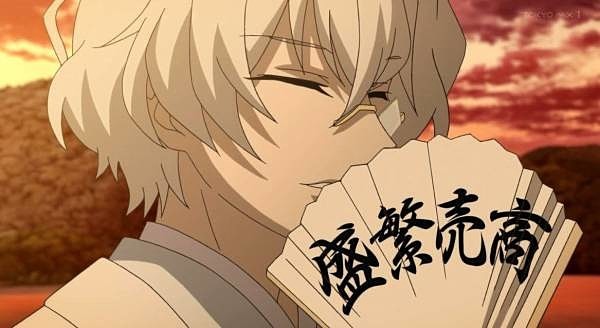The two versions of the Kakuriyo manga
 |
| The Ioka Wako manga (left) and the Toba Tsugaru manga (right) |
Happy weekend, everyone! I’m a few pages away from finishing the translation of Vol 7 Intermezzo 2 (about Byakuya), but I want to take a brief break for this post about the two versions of Kakuriyo manga. I found this article (written by a Kanagawa-based freelance writer Misaki) explains the two versions well, but I will summarise the article here. There’s also another article about the two manga from Misaki if you want to read further, but the content is very similar.
So, some of you would’ve noticed that there are two versions of the Kakuriyo manga, and you would ask why there are two versions. I also wondered about it, but only a few days ago I made time to google the answer in Japanese. The short answer is: to expand their readership.
So, the first manga started in 2016 as a serialization in KADOKAWA's "B's-LOG COMIC" and is illustrated by Wako Ioka (Ioka Wako, 衣丘わこ). This version is translated by Viz Media and Shojo Beat for English-speaking readers. The second version started in 2023 in Kodansha's "Monthly Shonen Sirius" and is illustrated by Tsugaru Toba(Toba Tsugaru,冬葉つがる). However, because both versions cater to different demographies, the first version (Ioka’s version) is retained and is still in production.
Ioka’s version is more faithful to the novel and – consequently – moves at a slower pace. The newer version (Toba’s version) moves at a faster pace and has more action scenes. These differences create different target audience: Ioka's version is usually for shojo readers or - at least - fans of the original novel, while Toba's version is for shonen readers.
Or shall I say… because they want to target different audience, hence the second version was created?
Misaki (Kiset Season) said this much:
The manga [Ioka’s version] that faithfully reproduces the novel has a leisurely progression of the story, allowing fans of the original work to relive the story at their own pace. The main episodes are carefully depicted, and detailed emotions and background are rarely omitted.
The manga [Toba’s version] that emphasizes entertainment, on the other hand, has a good pace of story. Action and the insertion of new episodes add dynamic developments and are designed to keep the reader from getting bored. These aspects make it easy for new readers who have never read light novels or anime to get into the style.
This is just my theory, but it’s possible that the second manga was created because the first manga didn’t get the traction it needs to sustain itself. As Misaki (Kiset Season) explained, Ioka’s version moves at a slower pace because it’s faithful to the novel, hence it appeals to the light novel readers (particularly females). However, the anime has attracted many male viewers as well (I recalled a male YouTube drummer who did a very good cover of the Orio-ya arc opening song). Since Kadokawa want to keep their readership alive, they created the second version, specifically catered to shonen (boys) readers who want faster-paced manga with more action scenes.
It seems the strategy works, for according to Misaki, the second version of manga (Toba’s version) successfully expanded the Kakuriyo readership. However, since many original readers still prefer to follow the faithful adaptation of the light novel, the first version (Ioka’s version) is retained and kept in production.
By the way, I read Vol 10 of Ioka’s version a few nights ago. It covers the episode where Aoi brought a bento dinner for Ōdanna-sama, who was having a go-game with Hatori (where while Aoi was eavesdropping on the gorgeous oni and tengu conversation, the fusuma door fell and she fell face-first into the room into Ōdanna-sama’s laughter). Vol 10 ends when Aoi was taken hostage by Orio-ya. I like this volume (I like volumes 8 and 9 as well), but I do agree that it moves slower and spends more time in details.
I also forgot to report that I have purchased Vol 1 and Vol 2 of the Toba Tsugaru version (in Japanese). I didn’t make time to read them until last night, and it was partly because I was dismayed at the fact that the second manga version was produced. I thought it was a sign of trouble and they just wanted to scrap the Ioka version, which I do like. Anyway, I read Toba’s version last night and… I actually came to like it! The pace is indeed faster and the panels move more like shonen manga panels… but I guess that’s exactly what they want. I might actually purchase the other volumes of Toba Tsugaru version.
(edit: I have purchased volumes 3, 6, 7, and 8 from Amazon JP. Toba Tsugaru's volumes 4 and 5 are out of stock)
 |
| Ioka Wako's Ōdanna-sama (Vol 1) |
 |
| Toba Tsugaru's Ōdanna-sama (Vol 1) |
From the artistic viewpoint, I do think that Ioka’s Ōdanna-sama is more gorgeous. His horns, for instance, are more pronounced (see the first photo of this article). However, Toba’s Ōdanna-sama is growing on me too, though his oni horns are too short for my taste. Toba uses two oni masks for Ōdanna-sama: the simpler one that just covers his eyes and nose (think of the Batman’s cowl with oni horns), and another one that is identical to Ioka’s oni mask. Interestingly, Toba’s design of the famous crystal hairpin is more similar to the anime version (Toba’s leaves are opening up though, which would be more cumbersome to imitate IRL).
 |
| Ioka's hairpin design (Vol 1) |
 |
| Toba's hairpin design (Vol 1) |
 |
| The anime hairpin (Episode 25) |
 |
| My made-to-order hairpin with a real ruby (@ArtisIgnis Etsy) |
 |
| The first one broke, so I had two more made... |
 |
| and I also order these ones for regular use... |
 |
| I love that Ōdanna-sama's eyes in the anime are magenta instead of red... |
 |
| Toba Tsugaru's Vol 8 Ch 29 (Sirius Shonen) |
 |
| We might get this one in Vol 11 of Ioka's manga (via B's-LOG) |
At any rate, I don't think we will see Toba’s version translated into English because it’s just too confusing for English-speaking readers to have two versions (and it might reduce the readership for both versions). I do wish that I can find the Kakuriyo manga (Ioka’s version) in my local comic stores. I hope Season Two of Kakuriyo will ignite more interest in this series, and hence more exposure to the manga. Who knows, Kodansha might start to translate Toba’s version into English but just keep it in Kindle version to reduce cost and expand it to shonen readership. In the end, any promotion for Kakuriyo is good, I guess.



Comments
vol 11). Other countries can buy this Ioka manga as well. Not sure why you perceive that the Ioka manga is only available in the US… but I agree the editors don’t really care about it. Shonen manga usually beats josei manga like Kakuriyo, sadly.